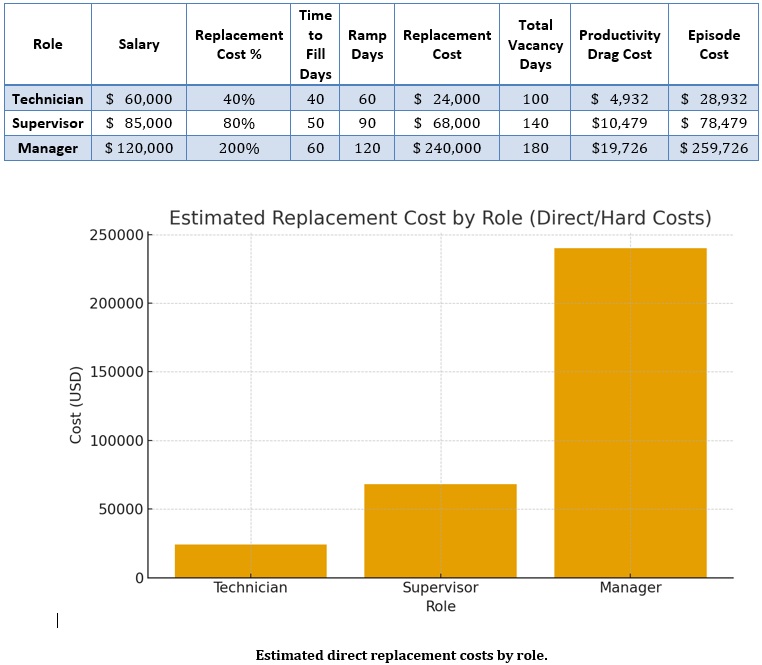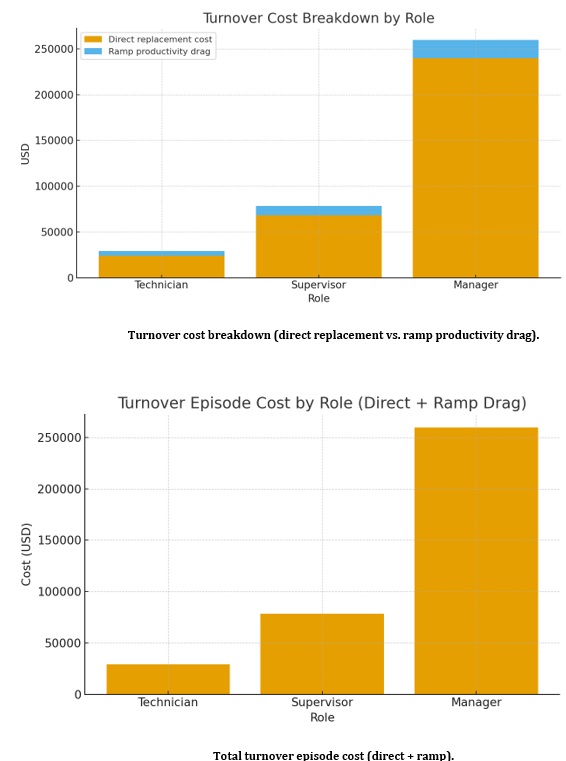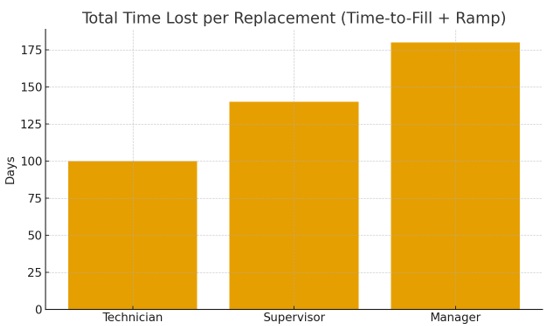How PD Drives Retention and Job Satisfaction
1) Visible growth paths: Skill ladders, role‑based PD hour targets, and wage steps reduce voluntary turnover.
2) Manager development: Coaching and leadership training correlate with higher engagement and stay intent—especially critical where replacement costs are highest.
3) Skills protection: PD preserves institutional knowledge and reduces vacancy risk in hard‑to‑fill roles.
4) Measurement: Track retention by PD participation/hours, employee satisfaction, internal mobility, time‑to‑productivity, and certification completions.
Sample 12‑Month Business Case
Scenario: 300‑person operations org, 22% annual turnover (≈66 leavers): 60% technicians, 25% supervisors, 15% managers.
PD plan: Foundational academies + manager coaching; 30–50 PD hours average; clear wage steps.
Target impact: 15% reduction in quits (≈10 saves). Avoided turnover costs (illustrative):
• 6 technicians × ~$29k ≈ $174k
• 2–3 supervisors × ~$78k ≈ $156k–$234k
• 1 manager × ~$260k ≈ $260k
Total avoided turnover cost ≈ $590k–$668k before quality/safety/customer impacts.
See data below for a visual illustration of the raw data
PROFESSIONAL DEVELOPMENT AND THE BOTTOM LINE
In a labor market where time‑to‑fill stretches into weeks and the cost of turnover can run into multiples of salary, professional development (PD) is one of the few levers that improves both employee retention and job satisfaction—while protecting the bottom line.
Why Professional Development (PD) Moves the Needle
• Employees frequently cite career development as a top reason for leaving; PD addresses the core quit driver.
• Learning opportunities are a leading retention strategy across industries.
• High‑development cultures show stronger retention and performance; turnover costs rise significantly with job level.
Quantifying Replacement Costs by Level
The table below summarizes conservative assumptions for three roles—Technician, Supervisor, and Manager—and the resulting cost and time impact of a single turnover event. You can update salaries and timelines to reflect your organization’s benchmarks.






Contact
Get in touch with us today.
Join our training community
info@idealtexag.com
866-875-6110
© 2025. All rights reserved.
